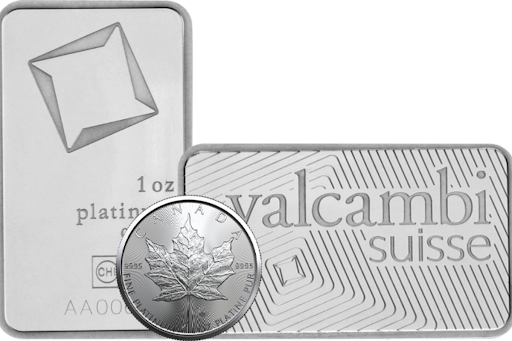Factors Driving the Platinum Spot Price: What You Need to Know

Platinum, one of the rarest and most precious metals, has a dynamic and often volatile market. Understanding the factors that influence the platinum spot price is crucial for investors and industry stakeholders. This article delves into the key drivers that impact the platinum spot price, providing insights into market trends and future projections.
Supply and Demand Dynamics
Global Supply
Platinum supply is primarily concentrated in a few countries, with South Africa and Russia being the largest producers. Any disruption in these regions, such as labour strikes, political instability, or mine closures, can significantly affect the platinum spot price. Additionally, the extraction process is complex and costly, making supply relatively inelastic. This means that changes in production levels can lead to substantial price fluctuations.
Industrial Demand
Platinum is widely used in various industries, including automotive, jewelry, and electronics. The automotive sector, in particular, plays a significant role as platinum is a key component in catalytic converters. Changes in automotive production, especially with the rise of electric vehicles, can influence the demand for platinum. A surge in demand from industrial applications can drive up the platinum per ounce price, while a decline can have the opposite effect.
Economic Indicators
Inflation and Interest Rates
Inflation and interest rates are critical economic indicators that affect the platinum spot price. During periods of high inflation, investors often seek precious metals like platinum as a hedge, driving up prices. Conversely, higher interest rates can make other investments more attractive, potentially reducing the demand for platinum and lowering its price.
Currency Strength
The strength of the U.S. dollar, in which platinum is typically priced, can also impact the platinum spot price per ounce. A strong dollar makes platinum more expensive for foreign investors, potentially reducing demand. On the other hand, a weaker dollar can increase demand from international buyers, pushing prices higher.
Market Speculation and Investment Trends
Speculative Trading
Speculative trading in the commodities market can lead to significant short-term fluctuations in the platinum spot price. Traders buying and selling futures contracts based on market predictions can drive prices up or down rapidly. While these movements can be temporary, they contribute to the overall volatility of platinum prices.
Investment Demand
Investor sentiment and demand for platinum as a safe-haven asset can also influence its price. Economic uncertainty, geopolitical tensions, and financial market instability often lead investors to seek refuge in precious metals, including platinum. Increased investment demand can elevate the platinum per ounce price, while reduced interest can lower it.
Technological and Regulatory Factors
Technological Advancements
Innovations in technology can impact the demand for platinum. For instance, advancements in fuel cell technology and the development of new industrial applications can increase demand. Conversely, the discovery of alternative materials or substitutes for platinum in industrial processes can reduce demand and, consequently, the platinum spot price per ounce.
Environmental Regulations
Stringent environmental regulations, especially those targeting vehicle emissions, can affect platinum demand. As regulations become more stringent, the demand for platinum in catalytic converters may increase, driving up the platinum spot price. Conversely, any relaxation of these regulations or advancements in alternative technologies that reduce the need for platinum could lower demand and price.
Geopolitical Events
Political Stability
Geopolitical events and political stability in major platinum-producing countries can have a direct impact on the platinum spot price. Political unrest, labour strikes, or changes in mining policies in countries like South Africa can disrupt supply and lead to price spikes. Investors closely monitor these events to anticipate potential impacts on platinum availability and pricing.
Trade Policies
International trade policies and tariffs can also influence the platinum spot price per ounce. Tariffs on platinum imports or exports can alter supply chains and affect prices. Trade agreements and diplomatic relations between key producing and consuming countries play a significant role in determining the flow and cost of platinum in the global market.
Environmental and Sustainability Concerns
Sustainable Mining Practices
The push for more sustainable and ethical mining practices can impact the supply side of the platinum market. Implementing stricter environmental standards and adopting sustainable practices may increase production costs, potentially driving up the platinum per ounce price. However, these measures can also enhance the reputation of platinum as an ethically sourced metal, possibly boosting its demand.
Recycling
Recycling of platinum from old catalytic converters and electronic devices contributes to the overall supply. Advances in recycling technology and increased recycling rates can supplement mined platinum, affecting the platinum spot price. Efficient recycling processes can help stabilize prices by providing an additional source of supply.
Conclusion
The platinum spot price is influenced by a complex interplay of factors, including supply and demand dynamics, economic indicators, market speculation, technological advancements, regulatory changes, geopolitical events, and environmental concerns. For investors and industry participants, staying informed about these factors is essential for making strategic decisions. As the market continues to evolve, understanding these key drivers will help navigate the opportunities and challenges associated with investing in platinum. By closely monitoring these elements, stakeholders can better anticipate price movements and make informed investment choices.





